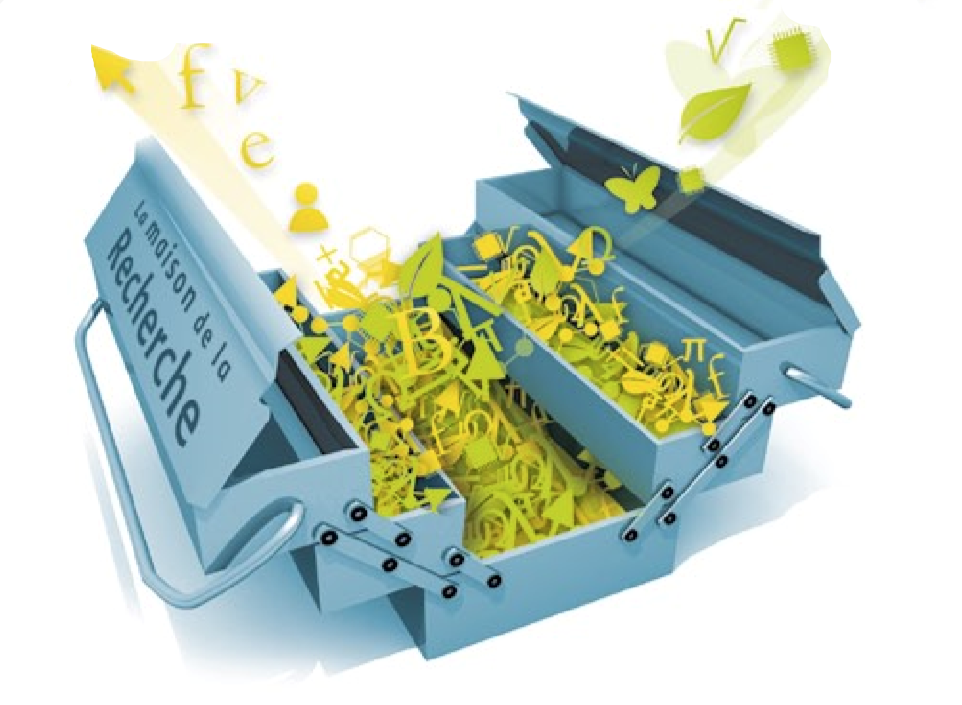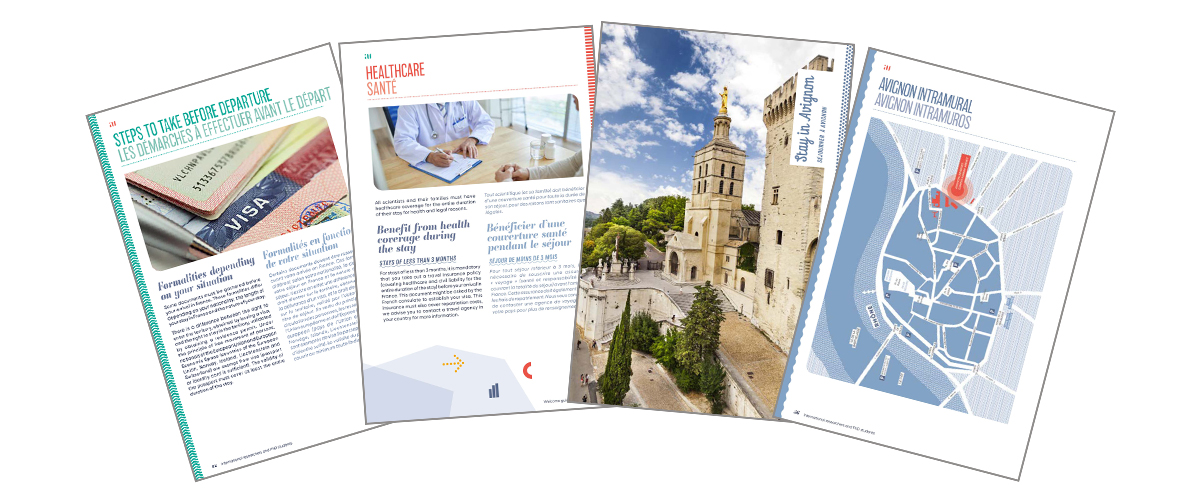Tools for a successful start to research collaborations
In this area you will find contract templates, definitions and all the information you need to get your future collaboration off to a good start.

Contract templates to download
The confidentiality agreement (also called "NDA" for non disclosure agreement in English) is a contract by which two or more partners undertake, within the framework of a project, to keep a certain amount of important and sensitive information for one or both parties strictly confidential.
The confidentiality agreement guarantees to the owner of the information that the information he is about to make available to the beneficiary will not be disclosed to third parties.
The Material Transfer Agreement (also known as the "MTA" for material transfer agreement in English) is a contract that governs the transfer and use of research material(s) or data provided by its owner to another entity that wishes to use the material(s) or data for its own internal research purposes.
Document to come
The research collaboration contract is a contract for the purpose of carrying out a joint research programme between one or more partners with a view to generating new knowledge. In the context of a collaboration, research is conducted jointly by the partners, who allocate dedicated R&D resources.
In the context of a collaborative project, only an obligation of means is engaged, i.e. the partners must use their best endeavours and capacities to fulfil their obligation.
The co-ownership of the results obtained jointly in the framework of a collaboration must be defined between the partners as well as the use and exploitation of these results.
Download the Avignon University collaboration contract template without financial flow
Download the CIFRE collaboration model
Download the Avignon University collaboration contract template with financial flow (to come)
A consortium agreement is a cooperation agreement framing collaborative research projects, i.e. projects involving public and private partners, with no financial flow between the parties, each party being subsidised to carry out the project (e.g. an ANR). The major issue in this type of agreement is to define access to the project's own knowledge and research results. Its duration is that of the activity for which its funder has provided it.
Download the model consortium agreement (coming soon)
The provision of services corresponds to the use of the service provider's know-how or expertise for the benefit of another partner, without involving any inventive activity.
As a matter of principle, the service provider has an obligation of result: the service provider must achieve a certain result within a certain period.
In return for payment of the total cost of the service, the commissioning partner owns the results and can exploit them freely.
The know-how implemented by the laboratory and its possible improvements remain the property of the university.
WHAT FUNDING IS AVAILABLE?
The aim of the Conventions Industrielles de Formation par la Recherche (CIFRE) is to encourage the development of public-private partnership research and to place doctoral students in employment conditions. The CIFRE scheme was created by the State to enable companies to stand out through innovation. In concrete terms, it brings the public and private spheres closer together by contributing to the financing of the salary of a doctoral student supervised by an academic laboratory on a business problem. For the company, it is a way to access knowledge and scientific and technical skills of the highest international level. For the laboratory, it is an opportunity for real application and validation fields for a finalised research.
Download the CIFRE collaboration model
Extract from the article written by Stéphane Fiorillo, sales engineer at IESA
This scheme provides 30% of funding for eligible expenditure incurred in research or development.
Of all the activities declared by companies as of right, the Research Tax Credit applies to (source: Ministry of Research) :
- 25% to basic and applied research.
- 75% to the experimental development of new products, processes ...
Collaboration between a university research laboratory and a company's applied research or experimental development enables the company to benefit from this very attractive scheme.
In particular, it allows a contribution to be made to the costs associated with the personnel expenses of a doctoral student, an employee attached to the research, a collaboration contract with a university laboratory, or intellectual property expenses... The RTC can also be combined with other subsidy financing mechanisms.
During the thesis
It is possible and even recommended to claim both direct aid (ANRT grant for CIFRE scholarships) and indirect aid (Research Tax Credit). It is not necessary to pay tax, it is sufficient to be taxable (and not necessarily taxed).
To find out how this coupling of direct and indirect aid behaves in terms of cash flow over the period of the doctorate, contact us (pierre.aumont@univ-avignon.fr).
- Annual charges
Actual gross salary of a PhD student: €23,484
Employer's expenses ~ 11 k
Typical collaboration contract with a hard science laboratory: 15 k€/year
Total annual expenses: €49K
- Annual grants
ANRT grant €14K
Research Tax Credit (CIR): €20K
- Final net cost to the company
Annual 15 K€, or ~ 1 300 € per month
i.e. an average funding rate of 75%
After the thesis
By hiring a doctor on a permanent basis, the company makes a profit for 24 months*.
"At the end of the thesis, if the young doctor is recruited on a permanent contract by the company, the company can then benefit, for the calculation of the CIR, from the particular advantage linked to the recruitment of young doctors: the salary is counted twice and the operating costs are increased to 200% of the salary during the 24 months following the first recruitment"
This scheme aims to encourage the hiring of new doctoral students in companies.
- Annual charges
Average gross salary of a doctor on permanent contract: 30 k€
Employer's expenses ~ 12 k
Total annual expenses: €42K
- Annual grants
Research Tax Credit (CIR): €50.4K
- Net gain for the company
+8.4K per year for 2 years
That is, a funding rate of 120 %.
*(under certain conditions such as being assigned to 100% for R&D activities, please consult us for details).
A service or RD collaboration contract with the University costs 40% of its real price!
This item of expenditure relates to expenditure incurred with public accredited bodies. It aims to strengthen and stimulate partnerships with public research laboratories.
The invoices for R&D expenses entrusted to university laboratories are taken into account for double their amount in the CIR base.
For a €10k contract, the associated Research Tax Credit is €6k (i.e. 30% of the eligible base which is therefore increased to €10k x2 = €20k).
- Net cost to the partner company: €4k
The laboratory notebook is a tool that ensures the traceability of research and innovation. Developed by the CURIE network and the Ministry of Research, in collaboration with INPI, it enables staff (teachers-researchers, engineers, technicians, doctoral students, post-doctoral students, trainees, etc.) to record their research activities in a conclusive manner.
The laboratory notebook is a decisive tool. It ensures the conservation and transmission of knowledge. It guarantees, on the one hand, the reproducibility of results and, on the other hand, avoids having to repeat experiments for lack of sufficient memory. By making the tests explicit, it guarantees the continuity of the work.
In the context of partnerships, the laboratory notebook makes it possible to trace the origin of inventions and thus determine the rights to these advances. It is useful for determining the first author and establishing co-inventors. It is a proof of ownership of the results.
In Europe, when several people are working on the same research subject, the patent right belongs to the first applicant, i.e. the one who has carried out the filing formalities first. In the United States, the right to a patent belongs to the first inventor, i.e. the first applicant who can prove it (date and witness).
The Maison de la Recherche is at your disposal to provide you with a laboratory notebook referenced by us.
Cost matrix
Guides to download
Are you planning to join us? To facilitate your arrival in Avignon, we have published a bilingual French-English guide which will give you all the keys to prepare your stay.

It has four main themes:
- Preparing to come
Procedures, coming with your family, learning French
- Moving to Avignon
Residence permit, housing, energy, bank account, taxes, insurance, health... - Staying in Avignon
Climate, work pace, culture, tourism, sport, gastronomy... - Finding your way
Transport, maps of Avignon and university campuses
Contact us
Research and Innovation Support Directorate (DARI)
Economic Development and Partnership Engineer
Tel. 04.90.16.28.47
Mob. 07.60.58.04.21
pierre.aumont@univ-avignon.fr
Mis à jour le 11 April 2024